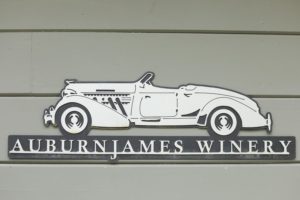
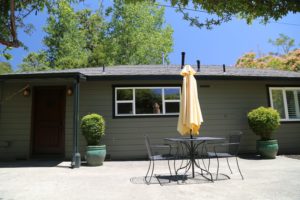
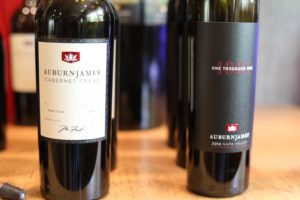 AuburnJames Winery was created as a joint venture between winemaker Jim Frost, Jim’s sister Mary and Matt Ospeck. The idea for this winery was created after Jim and Matt met for the first time at a friend’s pool party. James made wine under the label Hidden Creek for several years until Auburn James was formed in 2008. While James has long been attracted to the Bordeaux varieties and has sourced fruit from Napa Valley since their inception, the actual winery was located in the Livermore Valley until 2015 when they purchased an existing winery along the Silverado Trail in St. Helena with the current owner of record listed as Reza Kargarzadeh from Iowa. At one point this property was an abattoir; the words Sunshine Meat Co 1973 are still engraved in concrete on the property. In later years it was home to several prior wine brands including Napa Creek and Kent Rasmussen Winery. Auburn James made their first wine here in 2015.
AuburnJames Winery was created as a joint venture between winemaker Jim Frost, Jim’s sister Mary and Matt Ospeck. The idea for this winery was created after Jim and Matt met for the first time at a friend’s pool party. James made wine under the label Hidden Creek for several years until Auburn James was formed in 2008. While James has long been attracted to the Bordeaux varieties and has sourced fruit from Napa Valley since their inception, the actual winery was located in the Livermore Valley until 2015 when they purchased an existing winery along the Silverado Trail in St. Helena with the current owner of record listed as Reza Kargarzadeh from Iowa. At one point this property was an abattoir; the words Sunshine Meat Co 1973 are still engraved in concrete on the property. In later years it was home to several prior wine brands including Napa Creek and Kent Rasmussen Winery. Auburn James made their first wine here in 2015.
James grew up near Cambridge in England and was exposed to wine at an early age. He remembers wine was always in integral part of meals. Both his grandfather and mother made home wine – not from grapes but rather from various fruits. He recalls his mother collecting wild berries for making wine. He did not become a winemaker until much later in life; prior he was involved in the biotechnology and engineering industries for more than 25 years. Work brought him to the U.S. in 1988. James learned wine making by doing – making home wine for a number of years until starting his own brand. In 2015 his son Jonathan joined him as assistant winemaker. Music is Jonathan’s passion and after learning wine making on the job, he has come to the conclusion that both wine making and music share as many similarities as differences. Keep an eye on this talented father son wine making team.
The existing guest cottage on site has been converted into a tasting area for guests; they opened this to guests by prior appointment in June 2016. Tastings are intimate with your host and sometimes James or Jonathan will drop by to answer questions from guests. A cheese plate with small bites is sometimes paired with the wines. A visit here is highly personal and educational. A smaller more private room and an outdoor deck are also available for tastings. And if in the mood, guests can taste wine and enjoy a game of bocce ball.
This is not their first tasting room; their original tasting room opened in downtown Danville in 2011 and until that tasting room closed in 2017, most of their wine was sold through there. While they continue to source from select vineyards outside of Napa County, much of their production is from Napa Valley vineyards; having a base of operations here logistically made sense.
The winery name pays tribute to both James as the winemaker and co-founder Matt’s love of automobiles. The Auburn Automobile was a short-lived company based in Indiana with years of production from 1903-1937. Today their cars are highly sought after by collectors. In the early 2000s Matt purchased the rights to use the Auburn vehicle trademark. Matt also used to design vehicles and was involved in the design of the Lincoln Navigator. One of his ideas was implemented in cars – placing an arrow next to one’s fuel gauge indicating which side of the vehicle contained the gas cap. For a much more detailed look at the Auburn vehicle and the Auburn Cord Duesenberg Automobile Museum in Auburn, Indiana see our notes and photographs at the bottom of this review.
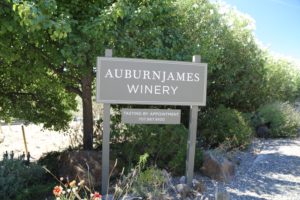
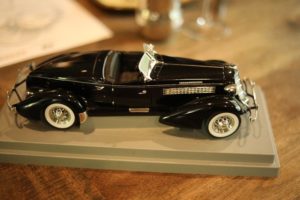
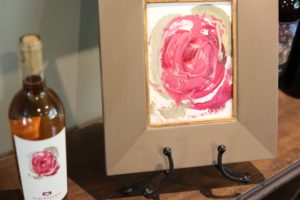 Auburn James employs (at the time of this review) a very unique system of aging a small portion of their wines in tank. They are using a product called the Wine Grenade on a trial basis comparing the same wine aged with this device versus aging in barrels without using this device. The Wine Grenade is a standalone micro-oxygenation product developed by five Auckland University students in New Zealand – it is far more cost effective then prior micro-oxygenation products. It is installed within a tank and is meant to help replicate oak barrel maturation but over a much quicker time period. The amount of oxygen imparted into the wine is controlled via a computer over the Internet. Auburn James estimates this may save up to 8 months in oak aging – and are looking to create a wine for distribution channels that is quicker to market as a result.
Auburn James employs (at the time of this review) a very unique system of aging a small portion of their wines in tank. They are using a product called the Wine Grenade on a trial basis comparing the same wine aged with this device versus aging in barrels without using this device. The Wine Grenade is a standalone micro-oxygenation product developed by five Auckland University students in New Zealand – it is far more cost effective then prior micro-oxygenation products. It is installed within a tank and is meant to help replicate oak barrel maturation but over a much quicker time period. The amount of oxygen imparted into the wine is controlled via a computer over the Internet. Auburn James estimates this may save up to 8 months in oak aging – and are looking to create a wine for distribution channels that is quicker to market as a result.
They currently produce over 8,000 cases of wine annually; their production includes a diversity of types of wines from not only Napa Valley but from several other regions in northern California. Many of their wines are produced in quantities of 400 cases or less. The focus of their wine making is on red Bordeaux styled wines which are approachable by themselves but are styled to pair with food. And they also produce Chardonnay and Pinot Noir.
James embraces both “the molecular level and sensory level of wine making” as he calls it – or in other words both the science and art of the craft. Their wines are by no means cookie cutter and each wine we have tried over the years stands out and is distinctive on its own merit. Refreshingly, these are wines that do not all smell or taste the same.
Select Wines
Whites/Rosé
The label for the Auburn James rosé is colorful and immediately catches one’s eye. James’s sister Mary is an artist and is responsible for curating the art in the Auburn James tasting room. During her visits to Napa Valley, she is often inspired to paint; she created this beautiful image of a rose not with a paint brush but with a palette knife.
The 2020 AuburnJames Clarksburg Rosé is a blend of Pinot Noir, Grenache and Malbec and was made by saignée in which prior to fermentation but after pressing, juice was drained off leaving a more concentrated wine. This wine is medium copper color in the glass; not one aromatic dominates on the bouquet, rather it shows layers of aromas including strawberry, citrus blossom and some mineralities. Offers a light creamy-like texture across the palate with flavors of citrus, cantaloupe, raspberry and peach. Lingers with a light touch (no tartness) of acidity.
The 2018 AuburnJames 1001 Napa Valley Chardonnay (Carneros) is deep gold in color; the bouquet offers sweet aromatics of ripe fruit including peach, apricot along with honeycomb, corn tassel and warm butter. Also offers some sweeter baking spices. The nose is certainly distinctive, and we would be able to pick this wine out of a lineup of other same vintage Napa Valley Chardonnays. It is very balanced across the palate with flavors of stone fruit including apricot and peach, butter and hints of pineapple. This wine lingers with a hint of crème Brule and light baking spices. The bright acidity continues to persist on the finish. Astute observers of AuburnJames wines will notice the 1001 on the label refers to their auspicious numbered address of the winery on the Silverado Trail.
Reds
The 2015 AuburnJames Phaeton is a red blend of 52% Merlot, 28% Malbec, 12% Cabernet Franc, 6% Cabernet Sauvignon and 2% Petit Verdot. This wine is medium to dark ruby in color; the bouquet shows a combination of several aromas including blackberry, spicy plum, old cedar wood, sweaty baseball mitt, a meatiness, dried tobacco leaf and bittersweet darker chocolate. This wine is very balanced from start; its core is built around darker savory characteristics and flavors. Lingers with a juicy acidity, darker spices including peppercorn, toasted oak and earthy but well-integrated rounded tannins. Did we already say this wine is savory?! We immediately thought of pairing this with BBQ ribs. This bottling is named after the 1935 Auburn 851 Phaeton, a classic vehicle, today, worth around 1 million dollars. In July 1935, one of the 1935 Auburn stock Phaeton’s driven by Ab Jenkins at the Bonneville Salt Flats in Utah was the first American stock car to exceed 100 miles per hour in a 12-hour time frame.
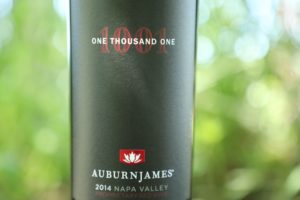 The 2014 AuburnJames 1001 One Thousand One Proprietary Red Wine is a blend of five Bordeaux varieties including Cabernet Sauvignon, Cabernet Franc, Petit Verdot, Merlot and Malbec. We tasted this wine 9 years post vintage. It is deep ruby in color with a slight brickish tinge on the rim in the glass; the bouquet offers a diversity of aromatics including both primary fruit, secondary aromas and light tertiary scents. It offers blackberry, ripe Santa Rosa plum, raspberry and mulberry, along with clove, cedar, chocolate and an attractive sweet pipe tobacco spice. The palate is fresh, savory, juicy and mouthwateringly bright. It offers flavors of red plum, red cherry, blackberry and raspberry. Unlike the bouquet which shows some bottle bouquet, the palate seems younger than its actual vintage. It lingers energetic and savory with red-fruited flavors along with grainy but rounded tannins accompanied by a persistent dryness on the finish. With proper cellaring, this wine has plenty of life ahead of it.
The 2014 AuburnJames 1001 One Thousand One Proprietary Red Wine is a blend of five Bordeaux varieties including Cabernet Sauvignon, Cabernet Franc, Petit Verdot, Merlot and Malbec. We tasted this wine 9 years post vintage. It is deep ruby in color with a slight brickish tinge on the rim in the glass; the bouquet offers a diversity of aromatics including both primary fruit, secondary aromas and light tertiary scents. It offers blackberry, ripe Santa Rosa plum, raspberry and mulberry, along with clove, cedar, chocolate and an attractive sweet pipe tobacco spice. The palate is fresh, savory, juicy and mouthwateringly bright. It offers flavors of red plum, red cherry, blackberry and raspberry. Unlike the bouquet which shows some bottle bouquet, the palate seems younger than its actual vintage. It lingers energetic and savory with red-fruited flavors along with grainy but rounded tannins accompanied by a persistent dryness on the finish. With proper cellaring, this wine has plenty of life ahead of it.
Their artists series are red wine blends featuring the works of various artists on the label. In 2010 the label for this wine was based on an original oil triptych painting (titled, Charleston Nocturne) by Rick Reinert (the original piece is on display in the tasting room). One can purchase three bottles of this same wine each with one panel of the triptych as a label. Lined up in a row they creatively mimic the original painting.
The 2010 AuburnJames Artist Series Meritage is a five Bordeaux varietal blend with the Cabernet Sauvignon coming from a vineyard they look too often for premium grapes – the Bella Vista Vineyard, a 200+ acre vineyard that is nearly half in Sonoma County and half in Napa County. These grapes were grown on the Napa side of the vineyard. There is a sweet note on the bouquet along with aromas of brown chocolate, clove and red licorice. A textural softness is immediately noticeable on the entry with a richness of flavor that soon shows mid palate through to the finish. The wine has good acidity. The tannins are somewhat earthy and last for some time.
The 2009 AuburnJames Napa Valley Meritage is a five Bordeaux varietal blend. Sweet red cherry aromas, blackberry and toasted cedar show on the bouquet. There is a richness of fruit mid palate anchored by dusty slightly chalky tannins which are well integrated into this wine’s overall profile. The finish lingers for some time with both fruit and subtle structure.
The 2009 AuburnJames Napa Valley Bella Vista-Block 1&4 Cabernet Sauvignon shows distinctive earth nuances, cigar smoke, toasted cedar with lively notes of plum on the bouquet. Good acidity, great balance and very well integrated tannins. The 2009 RDH vintage was created from the best barrels from this production – with the name RDH in honor of the former owner of this vineyard, Bob Hayes.
Auburn James also produces a Pinot Noir and right before bottling adds a small percentage of Chardonnay to help enhance and extend the aromatics. And their original ‘1001’ bottling, named in honor of their address was such a popular red blend that continue to produce this as well as other 1001 wines.
—
Some of the Auburn James wines are distributed including through BevMo! For more information about the wines, to join one of their club memberships (Flagship or Collector) or to request a tasting appointment at their Napa winery cottage (located a short drive from downtown St. Helena, the nearest town), visit: www.auburnjames.com
Auburn James enthusiasts may also want to visit the Auburn Lounge (formerly the Auburn James tasting room) in the heart of historic Danville, California about a 90-minute drive from Auburn James Winery. A speak easy theme, focuses on wine, beer and specialty cocktails. Open 7-days a week, from mid to late afternoon until late (depending on the day). The lounge continues to carry select bottlings from Auburn James.
Auburn Lounge & Wine Bar, Danville
Auburn, Indiana
Namesake for the Auburn automobile, Auburn, Indiana is a small town of about 14,000 people located about a 30 minute drive north of Fort Wayne and a three hour drive from the center of Detroit. It was founded in 1836 and then incorporated in 1849.
And based on its automotive heritage, the Auburn Cord Duesenberg Festival is held each Labor Day weekend. The logo for the city is based on the original logo for the Auburn Automobile Company.
Visitors will find plenty of streetside parking and the town convenient for walking. Highlights include Eckhart Park, founded in 1915 as Auburn’s first park and named in homage to the Charles Eckhart, the founder of the Eckhart Carriage Company, and a stop for shopping and food or high tea at Cranberry Cottage Tea Room and Boutique. This cute space formerly housed a Baptist Church but has since been converted into a collectible shop and an adjoining restaurant with both indoor and outdoor dining, weather permitting.
The Auburn Town Tavern serves up basic and affordable grub with an adjoining bar. And those looking for tasty protein can frequent the Auburn City Steakhouse located on the main square.
Auburn Automobile
The roots of the Auburn automobile begin with the Eckhart Carriage Company, founded by Charles Eckhart in 1874, the same year he first settled in Auburn. The first horse-drawn carriages he manufactured were built in his brick home with production soon expanding to 5 acres. By 1883 Eckhart Carriage Company was a small factory complex.
Charles’ sons began to work for their father including Frank, Morris and William, each with their own special skillset. Charles eventually retired; in 1902 Frank and Morris invested $2,500 to transition their building efforts into automobiles. Auburn Manufacturing Company was born and built its first vehicle in 1903 and its last in 1937. The 1903 vehicle was one cylinder – by 1905 they were producing two-cylinder vehicles. In 1909 the factory was expanded, eventually covering 23 acres and 11 buildings.
Not all businesses survive a transition in technology; take for instance certain film camera companies who were not able to survive the transition to digital camera technology. The first public showing of the Auburn automobile was naturally at the Chicago Auto Show in 1903. Dealers who were previously selling the Eckhart carriages transitioned into selling the Auburns.
In 1919, Morris Eckhart was in control of the company; he decided to sell to a group of Chicago businessmen including William Wrigley, Jr., the founder of Wrigley’s Chewing Gum. The company did not thrive under their ownership. The owner of a distributorship, Errett Lobban Cord was invited to visit the Auburn headquarters and agreed to become the company’s general manager in 1924. By 1926 Cord was the controlling shareholder and president of the company.
At the height of their operations, Auburn had dealers located in more than 90 dealers countries. The company’s greatest sales year was in 1931 when they produced more than 30,000 automobiles. Merely 6 years later the company was bankrupt.
Cord became a prominent businessman controlling more than 60 companies including not only cars but also airplanes, airlines, ranching, mining, appliances, distilleries and railroad. He oversaw the construction of a runway in Auburn which eventually became the Auburn Airport. He eventually developed real estate in Florida and Los Angeles, built radio and TV stations, owned the Circle L Ranch near Reno, Nevada and in 1963 became a State Senator in Nevada. He died in 1974 in Reno, Nevada.
Auburn Cord Duesenberg Automobile Museum
A must visit destination for early automobile enthusiasts, the Art Deco building that houses this museum was designed by Fort Wayne architect A.M. Strauss and was built between 1929 and 1930. It is located a short drive from downtown Auburn. This was the headquarters of the Auburn Automobile Company from 1930 until the company ceased operations in 1937. This museum was founded in 1974 (celebrated their 50th anniversary in 2024), became listed in the National Register of Historic Places in 1978 and became a National Historic Landmark in 2005.
One remaining building from the original carriage factory still stands and is available to enter free of charge, located next to the parking lot across from the main museum entrance. This old structure was originally used as a paint shop for buggies and perhaps some of the early Auburns. It still houses a number of early carriages.
Eleven different cars were produced in Auburn over the years; the museum contains numerous automobiles focusing on Auburn, Cord and Duesenberg cars. The well-stocked Duesy gift shop at the main entrance houses numerous books, magnets and other automobile memorabilia. The museum is the international headquarters of the Auburn Cord Duesenberg Club. And refreshingly, it opens early – operating hours are from 9am until 5pm daily.
The first exhibit visitors will see is a collection of cars including several Auburns on the first floor. This was the original Auburn Automobile Company showroom. Other highlights include the Early Auburns Gallery with cars built from 1904 to 1924 on display, the Gallery of Excellence and Innovation, the Gallery of Racers and Record-Setters and The Cars of Indiana. The museum houses more than 140 antique vehicles. The gallery spaces upstairs used to house the Auburn Company’s sales department.
And because this building originally served as headquarters for the company, part of its original operations have been well-preserved or replicated including Cord’s original office, the advertising offices and the conference room.
The oldest known Auburn still in existence is housed here; it is a 1904 Auburn Model A Rear Entrance Tonneau. It was one of only 50 such models built that year in a building located behind the original carriage factory. The headlights on this car needed to be lit by a match.
Several docents are usually available to answer specific questions about related automotive history and or the cars housed within.
James Foundation
No relation to Auburn James Winery, Auburn based James Foundation is a strong supporter of various charities, primarily based in Northeast Indiana. To date they have supported over 180 organizations with over 100 million in provided financial grants. Their headquarters are in downtown Auburn; they also own or have been involved in financing other real estate in Auburn including the James Cultural Plaza. And founders of the James Foundation, Rick and Vicki James maintain their own classic car collection.
Auburn National Auto & Truck Museum
This museum is located on the same grounds as the Auburn Cord Duesenberg Automobile Museum. Other than two original Auburns and one reproduction, this museum displays a wide variety of classic cars.



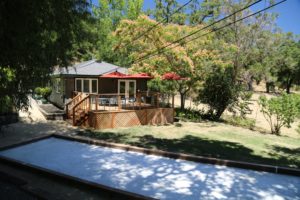
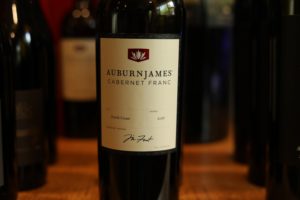
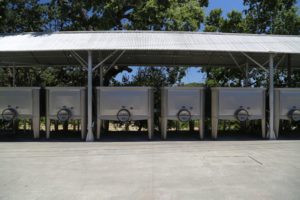
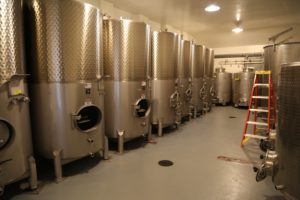
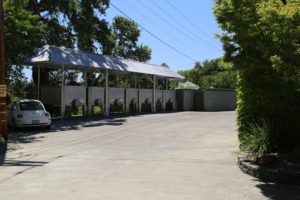
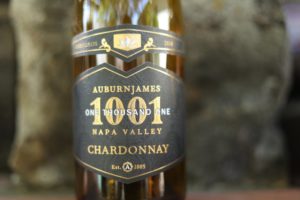
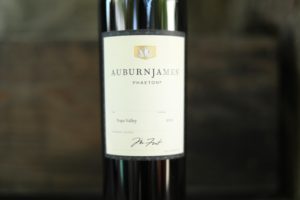
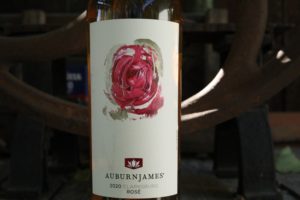
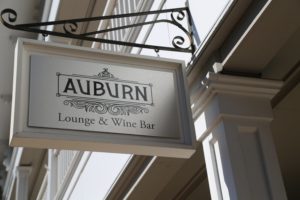
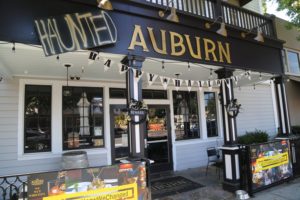
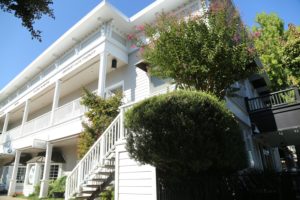
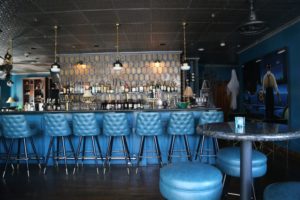
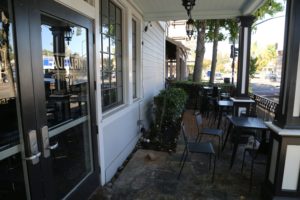
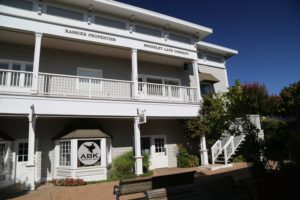
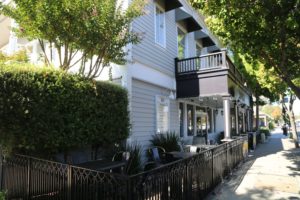
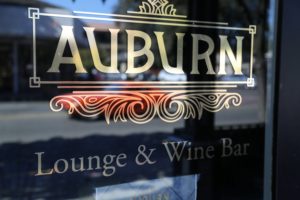
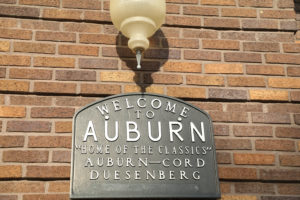
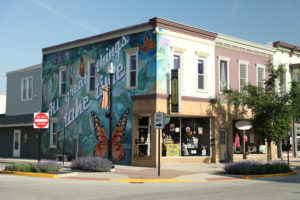
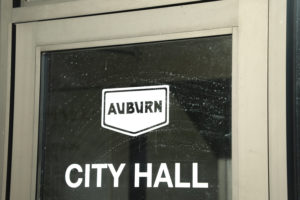
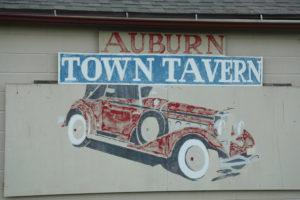

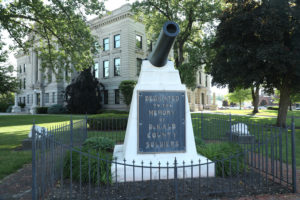
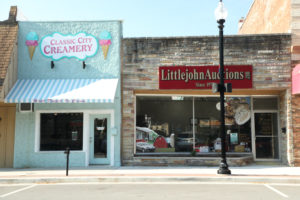
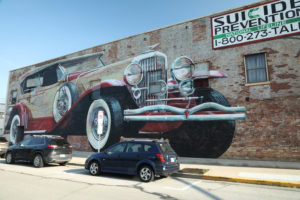
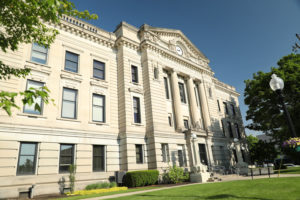
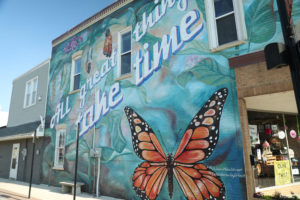


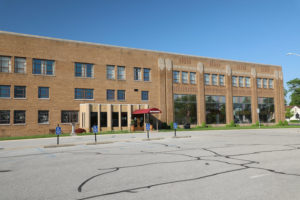
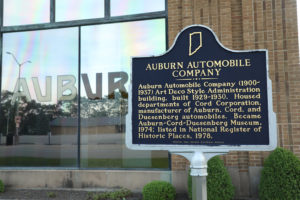
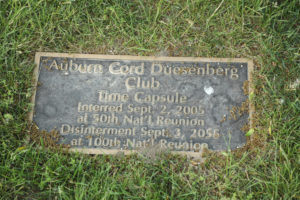
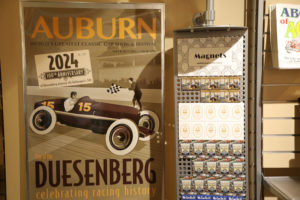
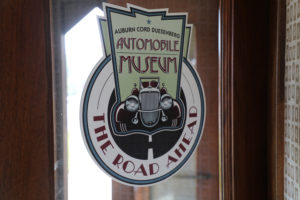
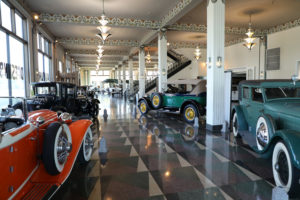

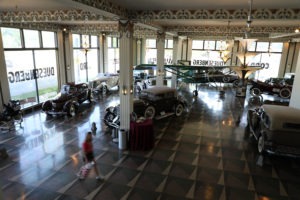
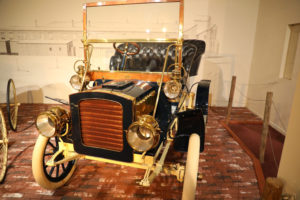

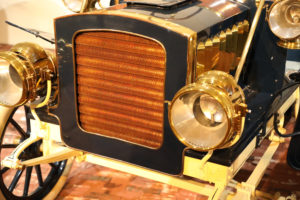
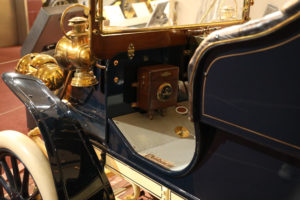

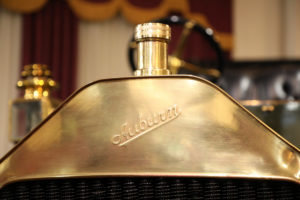
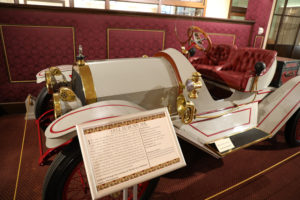
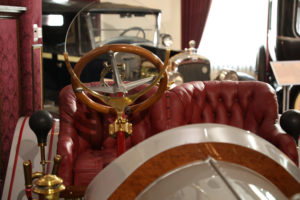

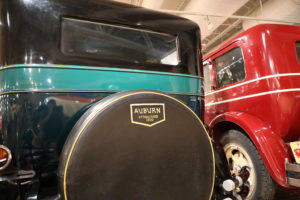
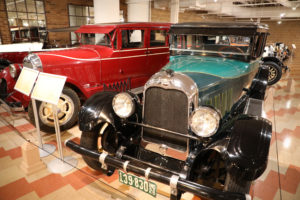
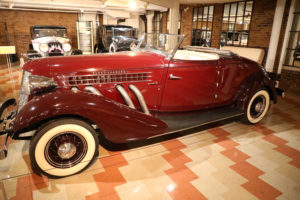

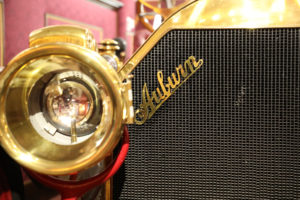
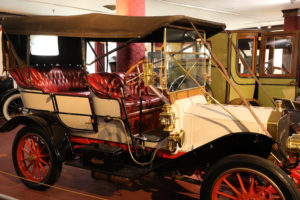

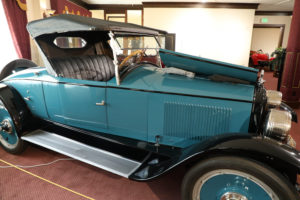

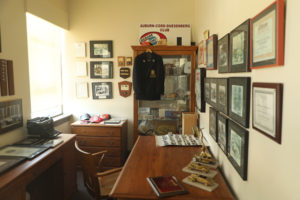
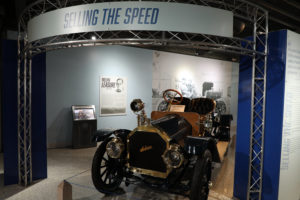
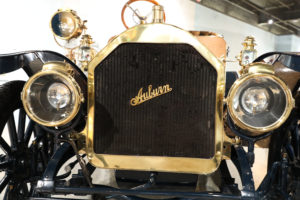
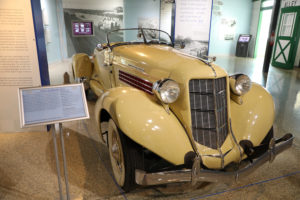

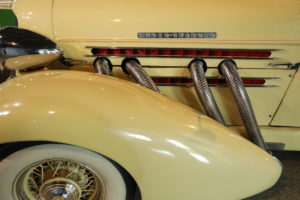
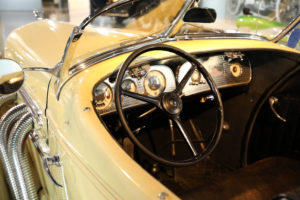
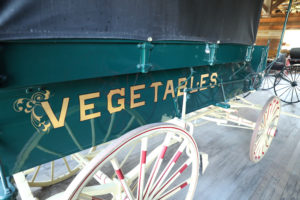
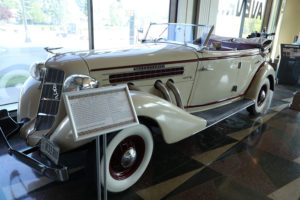
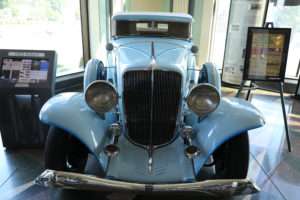
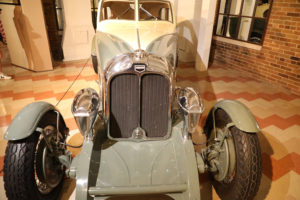
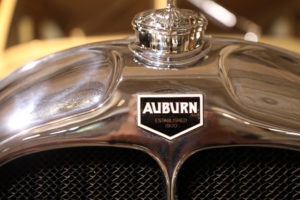
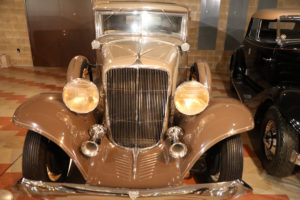
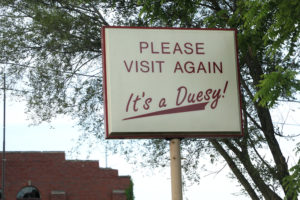
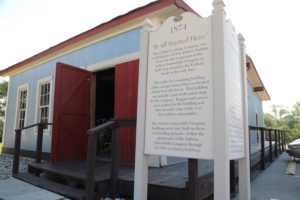
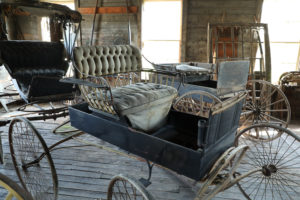
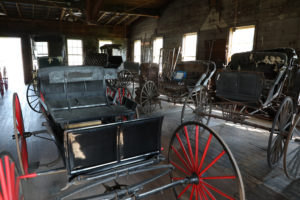
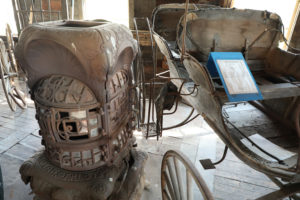
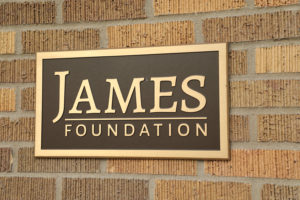
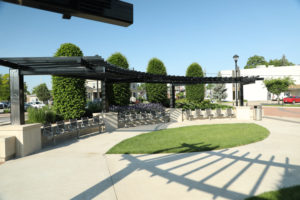
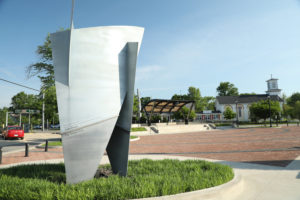
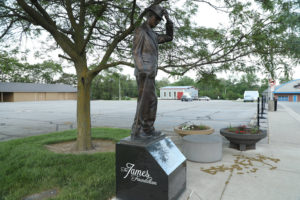


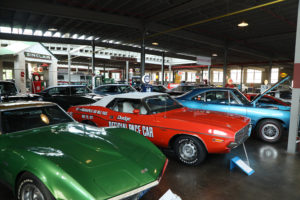
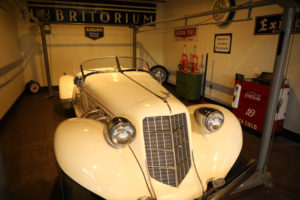
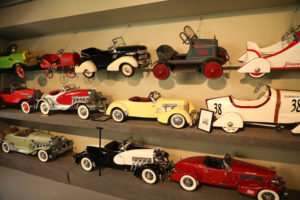
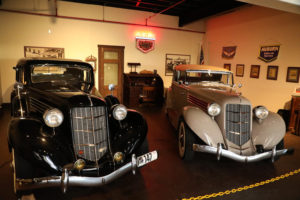
I also came up with this idea because I discussed it with them after meeting at a friend’s party. I am sure there is so much that can be done with this idea, but it needs to be implemented.